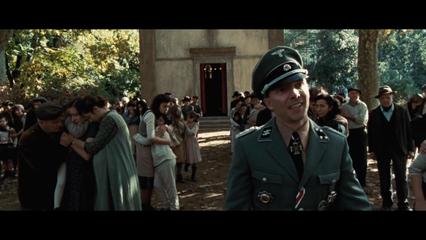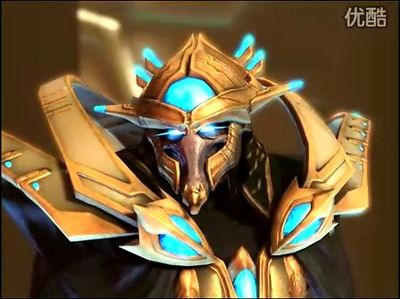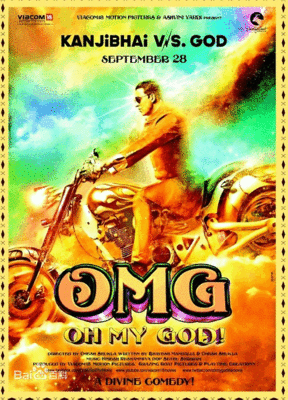Miracle at St. Anna(电影《圣安娜奇迹》)
| Miracle at St. Anna | |
|---|---|
| Theatrical release poster | |
| Directed by | Spike Lee |
| Produced by | Spike Lee Roberto Cicutto Luigi Musini |
| Screenplay by | JamesMcBride |
| Based on | Miracle at St. Anna by James McBride |
| Starring | Derek Luke Michael Ealy Laz Alonso Omar BensonMiller PierfrancescoFavino ValentinaCervi |
| Music by | TerenceBlanchard |
| Cinematography | MatthewLibatique |
| Edited by | BarryAlexander Brown |
| Production company | TouchstonePictures 40Acres and a Mule Filmworks RAICinema On My Own Produzioni Cinematografiche |
| Distributed by | Walt Disney Studios Motion Pictures |
| Release dates | September 26, 2008 |
| Running time | 160 minutes |
| Country | United States Italy[1] |
| Language | English Italian German |
| Budget | $45 million[2] |
| Box office | $9.3 million |
Miracle at St. Anna is a 2008 American–Italianepic warfilm set primarily in Italy during German-occupiedEurope in World War II.Directed by Spike Lee, the film isbased on the eponymous 2003 novel by JamesMcBride, who also wrote the screenplay. The film starsDerek Luke, Michael Ealy,Laz Alonso, Omar BensonMiller, PierfrancescoFavino and ValentinaCervi.
Miracle at St. Anna tells the story of four Buffalo Soldiersof the 92nd Infantry Division who seek refuge in a small Tuscanvillage, where they form a bond with the residents. The story ispresented as a flashback,as one survivor reflects upon his experiences in a framestory set in 1980s New York. Several real-life events thatoccurred during the war, such as the Sant'Annadi Stazzema massacre, are re-enacted, placing Miracle at St.Anna within the genre of historicalfiction.
Lee first learned of the novel in 2004 and approached McBridewith the idea of a film adaptation.In Europe, the film's development attracted the attention ofItalian film producers, and Lee’s reputation as an acclaimedfilmmaker helped secure the $45 million budget. A majority of thefilm was shot in Italy, on several locations affected by World WarII. Other filming locations included New York, Louisiana and TheBahamas.
Miracle at St. Anna premiered at the 2008 Toronto International Film Festival before it was releasedon September 26, 2008. It was met with mostly negative reviews fromcritics and drew controversy in Italy over historical inaccuracies.During its theatrical run, Miracle at St. Anna was a boxoffice disappointment, grossing only $9.3 million worldwide.
Plot
In 1983, Hector Negron, a World War IIveteran, works as a post office clerk in New York City. Afterrecognizing a customer, Negron shoots and kills the man with aGerman Luger pistol.Several hours later, reporter Tim Boyle and Detective Tony Ricciare at the crime scene seeking information. At Negron's apartment,Boyle, Ricci and other officers discover a finely carved statuehead, the Head of the Primavera, a long missing segment fromthe Ponte SantaTrinita. Also found is a Purple Heart and aphotograph revealing that Negron was awarded the Distinguished Service Cross and Silver Star.
Negron, in a flashbacktells of his war experiences as a young corporal of thesegregated 92nd Infantry Division in 1944 Italy. A disastrous attackensues on German positions across the Serchio River. Anofficer, Captain Nokes, calls down artillery on the 92nd's ownposition, refusing to believe their reports of how far they haveadvanced. Many American soldiers are killed, leaving Negronstranded on the wrong side of the river with three men: StaffSergeant Aubrey Stamps, Sergeant Bishop Cummings, and Private SamTrain. Sam rescues an Italian boy named Angelo from a collapsingbuilding, and discovers the Head of the Primavera, which Sambelieves to carry magical powers. While traveling through themountains of Tuscany, the soldiers enter a small village, wherethey form a bond with the residents. Sam grows especially fond ofAngelo, becoming the boy's father figure. One Italian villager,Renata, soon becomes entangled in a love triangle withStamps and Bishop, which creates conflict.
After Negron gets his damaged backpack radio working, thesoldiers contact headquarters and are told to capture an enemysoldier. A localPartisan group arrives with a young German deserter, HansBrundt, as their prisoner. Earlier, residents of the nearby villageof Sant'Anna diStazzema were killedby German forces following a betrayal by a Partisan, namedRodolfo, who knows that Brundt can identify him as the traitor.After concealing the fact that German forces are approaching thevillage in a counterattack, Rodolfo kills Brundt and the Partisanleader before escaping. It is Rodolfo whom Negron will kill 39years later. Captain Nokes arrives in the village to interrogateBrundt and finds him dead. The Americans prepare to leave thevillage ahead of a German counterattack, but Sam refuses to leaveAngelo behind. After promising to court-martial all four soldiers,Nokes and his contingent drive out of town, but he is killed in theopening German offensive.
The remaining American soldiers and Partisans fight the Germans.Sam is fatally wounded after being shot twice while carrying anunconscious Angelo and dies from his injuries. Bishop and Negronhold off the Germans while Stamps tries to move the villagers tosafety, but they are too heavily outnumbered. Renata and Stamps arekilled, and Bishop dies after successfully reviving Angelo. Negron,in the retreat, is shot in the back and is saved by the radio.After Angelo gives him the Head of the Primavera, Negron gives theboy his rosary and tells him to leave. Negron is spared by adisillusioned German officer who hands over his own Luger and tellsNegron to avenge himself. American soldiers arrive and secure thevillage before evacuating the wounded Negron and Angelo, the solesurvivors of the German attack.
In 1984, Negron is the defendant in a court proceeding, facing alife sentence for his killing of Rodolfo. He is successfullydefended by a powerful executive attorney acting on behalf of awealthy man. Hector is brought to the Bahamas and is reunited withthe Head of the Primavera, accompanied by its new owner whotakes out a rosary and reveals himself as an adult Angelo. Theyboth hold Hector's rosary and happily burst into tears.
Cast
- One of four stranded Buffalo Soldiersfrom the 92nd Infantry Division. Director Spike Lee describedStamps as “the leader” of the men, while screenwriter JamesMcBride stated that, “Stamps is a well-educated collegegraduate who has both faith and disappointment in the Americansystem. He’s deeply divided as to what his place and the place ofthe Negro in American society is or should be.”[1]:20 Wesley Snipeswas originally cast as Stamps, but could not commit due to hisfinancial troubles.[3]
- One of the four soldiers, a womanizer and card player. Thecharacter is also known for being arrogant and distrustful, andshows hatred towards his white commanders. Lee stated that thecharacter is “a happy-go-lucky guy. He does not like to be underthe thumb of authority. He likes card games andwomen.”[1]Ealy described the character’s indifference: “I think Bishop is thevoice that doesn’t believe change is going to come, and doesn’tbelieve that he belongs over there fighting.”[1]:21 Terrence Howardwas originally in talks to play Bishop, prior to Ealy'scasting.[3]
- Negron first appears in the film's frame story as abitter, 70-year-old World War II veteran living in Harlem, New Yorkwho reflects on his experiences during World War II.Negron, a black Puerto Rican, is fluent in English, Spanish andItalian, which enables him to serve as a translator for theAmericans and Italians.[1]:21 Alonso first learned ofthe novel from his agent and read it prior to auditioning for therole.[1]:21 He had to convince Leethat he was fluent in Spanish, and created an audition tape ofhimself speaking the language, which won him the role.[1]:21Alonso found difficulty in portraying Negron as an elderly WorldWar II veteran: “This role was very emotionally draining. Ninetypercent of the time, the elderly have outlived most of the peoplethey have loved. When I played Negrón as an old man, I had to focuson everything I’ve lost in my life: my dad, friends and love lost,and that was a really depressing thing to do.”[4]
- The “biggest” of the four soldiers,[1]:22Sam is known for his child-like personality. He befriends a youngItalian boy, Angelo Torancelli, and becomes a father figure to thechild. Sam is first to discover a finely carved statue head, theHead of the Primavera, which he believes to carry magical powers.Miller was a fan of McBride's novel prior to learning of the filmadaptation by Lee.[1]:21He fought hard to win the role of Sam, which resulted in himphysically preparing for the part: “My physical prep was a littledifferent than everybody else’s, because Spike wanted me for themovie, but he told me I had to lose weight to do it. I had nineweeks to lose 60 pounds. We got it done.”[1]:22
- A young Italian boy who befriends Sam Train. Sciabordi appearsin his debut film role. Lee issued a casting call for an Italianchild actor. 5,000 child actors auditioned for the role prior toSciabordi’s casting.[1]:22Sciabordi described working with co-star Omar Benson Miller: “Omarwas great fun. We were always playing and he even taught me how toplay baseball.”[1]:22Luigi Lo Cascioportrays an adult Angelo in the film’s final scene.
- The leader of a Partisangroup operating in the area. Favino was the filmmakers' primarychoice for the role. McBride suggested that the characterrepresents the great Partisan leaders who led thousands in Italythroughout World War II: "He's a deeply thoughtful young man. Afterwitnessing several atrocities, he basically snaps and becomes oneof the most ruthless and most clever and most sought-afterPartisans. Although he's ruthless against his enemies, he's alwaysa fair-minded person, deeply kind, fighting for his country—notfighting to kill Germans, fighting to kill the enemy. He's a leaderwith a heart."[1]:23
- One of the Italian villagers, who proves to be an instant allyof the four soldiers. Renata soon becomes entangled in a love triangle withStamps and Bishop, which creates conflict. McBride said of thecharacter, "Renata exemplifies the difficulties Italian women facedduring the war. Her husband was drafted and she hasn’t heard fromhim in two years. She's very smart and is one of the few people inher village who has learned some English. She tries very hard tomake her father renounce his Fascistbeliefs."[1]:23
John Turturroplays Detective Antonio "Tony" Ricci, who is charged withinvestigating a post office murder in 1983; JosephGordon-Levitt plays Tim Boyle, the investigative reporterassigned to cover the murder and subsequent discovery of an Italianartifact; and KerryWashington plays Zana Wilder, a lawyer hired to represent thesuspected post office murderer. Naomi Campbellwas originally cast as Wilder in September 2007,[5]but later pulled out due to scheduling conflicts.[6]
Other cast members include John Leguizamo,in a cameo appearance, as Enrico; D. B. Sweeney asColonel Jack Driscoll, an advocate for the Buffalo Soldiers;Robert JohnBurke as General Ned Almond, ahigh-ranking officer who opposes the 92nd Division; Omari Hardwick asPlatoon Commander Huggs; Omero Antonuttias Ludovico Salducci, Renata’s Fascist father; Sergio Albelli asRodolfo Berelli, a Partisan of questionable loyalties; Lydia Biondias Natalina, a village healer; Michael K.Williams as a frightened soldier; ChristianBerkel as German officer Eicholz; Jan Pohl as Hans Brundt, theGerman deserter; and Alexandra MariaLara as Mildred Gillars,nicknamed Axis Sally, an American broadcaster employed by theGermans as a propagandist.[1]:2and 23
Production
Development
| You could say it’s a war movie. Youcould say it’s a movie about a boy and a man. You could say it’s amovie about Americans and Italians. You could say it’s a movieabout a German who does the right thing. But the film is ultimatelyabout the miracle of love between human beings and the choices theymake in the face of enormous adversity.” |
| —Screenwriter JamesMcBride describing the film adaptation of hisnovel.[1]:20 |
The novel Miracle at St. Anna was written by JamesMcBride originating from his late uncle's experiences as aWorld War II soldier.[1]:18 Upon writing the novel,McBride conducted his own research and learned of the 92nd Infantry Division, which consisted of 15,000African-American soldiers, who served in Italy during World War IIfrom August 1944 to November 1945. McBride interviewed severalremaining members of the 92nd Division. "I studied Italian atThe New School inNew York City," he explained. "I moved to Italy with my family forsix months. I interviewed dozens of Italians—Partisansand Fascists. Iinterviewed dozens of African-American soldiers who fought in thewar, most who have since passed away. I must have read at least 20books. I went to the ArmyWar College in Carlisle, Pennsylvania. I studied the wholebusiness of what the 92nd did in Italy during the war, to try toget an idea of what really transpired."[1]:19The 92nd Division served as the basis for McBride's novel, whichwas published in 2003.[1]:18
Spike Lee firstlearned of the novel in 2004 and contacted McBride about making afilmadaptation.[7]:Sec1:6[8] He felt that McBride wasthe perfect person to write the screenplay, believing that hisnovel would serve as a guide.[1]:18–19Commenting on the difficult process of adapting his book into ascreenplay, McBride stated, “As a novelist, you tend to thinkinternally. You can guide what the character says and you canexplore what he or she is thinking. Movies don't have time toexplain. You have to get right to the muscle.”[1]:20
The film adaptation of Miracle at St. Anna attracted theattention of Italian producers Roberto Cicutto and Luigi Musini,the co-founders of On My Own ProduzioniCinematografiche.[8]Cicutto explained that they knew that Lee was "not just coming toItaly to make a film as an American director, but to make a filmthat belongs to his culture and to our history." The film's budgetwas an estimated $45 million.[2]Under their Own My Own production banner, Cicutto and Musinicontributed $8.74 million.[8][9]Lee's reputation as an acclaimed filmmaker in Europe, where heserved as a jury member of the 2004Venice Film Festival, also helped the filmmakers obtaintwo-thirds of the budget from Italy's RAI Cinema and France'sTF1 ($30million).[10]TouchstonePictures provided the remainder ($6.26 million),[9][10]and later released the film in North America.
Lee described Miracle at St. Anna as an "ensemblepiece"[1]:20 and aimed forauthenticity in his depiction of American and German soldiersbattling in Italy.[1]:24In casting Italian actors, he held a casting call inRome. The Italian actors, all born in Rome, weree coached to soundas though they were from Tuscany.[1]:22The actors portraying soldiers underwent a two-week boot camp,supervised by senior military advisor Billy Budd, a 15-yearRoyal Marineveteran who had served in the FalklandsWar.[1]:24
Filming
Director Spike Lee in2007Principalphotography for Miracle at St. Anna lasted nine weeks,beginning in October 2007[8]and concluding in December of that year;[9]filming took place in Italy, New York, Louisiana and TheBahamas.[1]:6–8The film was the first by Lee to be shot in Europe, and thedirector insisted on shooting on locations where the story is set.Filming began in Tuscany,[3]where the Tuscan regional government gave Lee permission to filmwhere the actual events took place.[9]According to producer Luigi Musini, Miracle at St. Anna wasshot along the Gothic Line, whichwas the major line of defense in the final stages of World War II:"The location is highly representative of what the war was inItaly, what our resistance was. True dramatic episodes took placethere.”[1]:24The first ten days of filming took place on the Serchio River,covering the battle sequence that opens the film.[1]:25A scene that recreates the Sant'Annadi Stazzema massacre was shot where the atrocity took place;the massacre—in which over 500 villagers were murdered by Germanoccupation forces—is re-enacted in the film.[11]Filming then took place in Rome for one month; in New York for fourdays; in White Castle, Louisiana for two days; and in The Bahamasfor two days.[3]
Design and effects
MatthewLibatique served as cinematographer, having previouslycollaborated with Lee on the films She Hate Me(2004) and Inside Man(2006). Libatique relied on the use of natural light, which provedchallenging for scenes shot indoors.[1]:26The final battle sequence in the film was especially difficult asthe film relied on the use of practical effects and difficultweather conditions.[1]:25Libatique's solution was to collaborate with Lee, military advisorBilly Budd, and first assistantdirector Mike Ellis in creating storyboards tochoreograph the scenes. Productiondesigner Tonino Zera was tasked with filling outdoor locationswith greenery, rebuilding exteriors and constructing the interiorof an Italian barn.[1]:25Costume designerCarlo Poggiolo consulted with a former Buffalo Soldier of the 92ndDivision, prior to designing the American soldiers' outfits. Healso provided contemporary and historical wardrobepieces.[1]:26ErnestDickerson served as the film's second unitdirector, cinematographer, and camera operator.[1]:6The visual effects were created by George Lucas'IndustrialLight & Magic (ILM).[1]:10After Lee approached him, Lucas allowed ILM's team of artists towork on the visual effects for the film.[3]
Music
TerenceBlanchard composed the film score, markinghis twelfth collaboration with Lee. For the score, he attempted tomake a distinction between American and German soldiers. "That wasfirst done through the use of percussion, using a higher-pitched,tighter sound for Germans, and a fuller-field drum sound forAmericans," he explained. "I also drew a distinction by usingFrench horns forAmerican forces, and a Wagner tuben forGerman forces." Scoring the film required the use of a 90-pieceorchestra, which was larger than in any of Lee's previous films.Blanchard also relied on the use of instruments from the 1940s era,including a mandolin, accordion, slide guitar andrope drum.[1]:26–27
The film's soundtrack, titled Miracle at St. Anna: OriginalSoundtrack, was released in CD and digitaldownloading formats by HollywoodRecords on September 23, 2008.[12]
Release
WaltDisney Studios Motion Pictures released Miracle at St.Anna under its adult film label, TouchstonePictures. The film's world premiere was at the 2008 Toronto International Film Festival on September 7,2008.[13]The film later premiered in France at the 34th DeauvilleAmerican Film Festival on September 10, 2008.[14]Miracle at St. Anna premiered in New York City at theZiegfeldTheatre on September 22, 2008.[15]Disney released the film in the United States and Canada onSeptember 26, 2008. The film was released in Italy on October 3,2008; in Romania on April 10, 2009; in Bolivia and Brazil on April30, 2009; in the United Arab Emirates on May 28, 2009; and inLebanon on September 10, 2009.[16]
Box office
Miracle at St. Anna grossed $7,658,999 in NorthAmerica[17]and $1,404,716[16]from markets elsewhere—a worldwide total of $9,323,833 against a$45 million budget.[18]
On its opening day in North America, the film debuted at ninthplace, grossing $967,329 from 1,185 theaters.[19]The end of the opening weekend saw the film take a total of$3,477,996—for an average of $2,935 per theater—finishing as thenumber eight grossing film of the weekend.[20]Steve Mason of Hollywood.combelieved that Miracle at St. Anna's negative reviews andmoviegoers' declining interest in war films contributedto the film's poor box office performance.[21]On its second weekend, the film saw a 50.1% decrease in revenue,moving down to fourteenth place and earning an additional$1,736,302—an average of $1,465 per theatre.[22]Miracle at St. Anna was pulled out of theatres on November25, 2008 after 61 days (8.7 weeks) of domesticrelease.[2]
Following its release in North America, Miracle at St.Anna continued to perform poorly in international markets. Itshighest gross was in Italy, where it grossed $1,363,754 during itstheatrical run.[18]Also contributing to the film's $1.4 million gross in internationalmarkets was Bolivia ($9,821), Brazil ($9,821), Lebanon ($3,184),Romania ($1,465), and the United Arab Emirates($26,492).[18]
Litigation
Following the theatrical release of Miracle at St. Anna,Spike Lee and the Italian production company On My Own ProduzioniCinematografiche brought a lawsuit against TF1, alleging that thecompany failed in its contractual agreement with On My Own todistribute the film in international markets, excluding the UnitedStates, Canada and Italy. In its defense, TF1 refused to distributeMiracle at St. Anna, claiming that Lee had made a differentfilm than the one promised, and refused to pay On My Own the€11million advance needed to distribute the filminternationally.[23]
On June 21, 2011, a Paris court ruled in Lee and On My Own'sfavor, believing that TF1 failed to honor the contract, whichproved "disastrous" for the film. TF1 was fined €32 million(US$46million).[23]TF1 was ordered to pay On My Own €20 million in damages, plus afurther €1 million for moral prejudice; Lee was awarded €1 million,while screenwriter James McBride received €200,000; TF1 was alsoordered to pay €13 million to BNP Paribas to coverthe advance it had failed to pay.[23]
Reception
Miracle at St. Anna has received mostly negative reviewsfrom critics; Rotten Tomatoessampled 118 reviewers and as of April 2013, the film has a 34%rating. The website's consensus was that "Miracle at St.Anna is a well-intentioned but overlong, disjointed affair thathits few of the right notes."[24]Metacritic, anotherreview aggregator, assigned the film a weighted average score of 37(out of 100) based on 31 reviews from mainstream critics,considered to be "generally unfavorable reviews".[25]
Todd McCarthy ofVarietycalled the film "a clunky, poorly constructed drama designed tospotlight the little-remarked role of black American soldiers inWorld War II."[26]James Rocchi, writing for Cinematical, gave the film a mixedreview: "When Miracle at St. Anna falters, it's in themoments that seem like they could have been crafted by any otherfilm maker; when Miracle at St. Anna succeeds, it's in themoments that could only have been crafted by Lee."[27]Ann Hornaday of The WashingtonPost wrote that the film was "overwrought, overproduced,overbusy and overlong" and that "Miracle at St. Anna finallysuffers from the worst filmmaking sin of all: the failure of trust,in the story and the audience."[28]Claudia Puig of USA Today wrotethat the film "aspires to be epic, but mostly it's just unfocused,sprawling and badly in need of editing" and that "[i]t tries hardto be inspiring, but it has jarring tonal shifts, stereotypedcharacters and a lack of narrative perspective." [29] Peter Travers ofRolling Stonedescribed the film as "too long, lazily constructed, and crammedwith too many characters and subplots for any director to developfully outside of an HBOminiseries."[30]
Despite a mostly negative reception, Miracle at St. Annareceived some praise. Eric D. Snider, writing for Film.compraised the film, writing, "This is beyond the scope of anythingLee has done before, and he rises to the challenge remarkably well,with battle scenes nearly as visceral and jolting as those inSaving PrivateRyan and a multi-layered story involving the U.S. Army, theNazis, and the Italian resistance movement."[31]Snider criticized the film's frame story, whichhe described as "unnecessary and definitely corny."[31]James Verniere of the Boston Heraldawarded the film an "A" grade, calling it a "masterpiece"and a "classic American WWII movie that both acknowledges therousing tradition of such war epics as The LongestDay (1962) and The Big RedOne (1980) and adds something new: paying tribute to theWorld War II African-American soldiers who made the ultimatesacrifice for their country.[32]Roger Ebert, writingfor the ChicagoSun-Times, criticized the editing but praised the filmoverall, describing it as "epic" with "one of the best battlescenes I can remember, on par with Saving PrivateRyan...Miracle at St. Anna contains richness, anger,history, sentiment, fantasy, reality, violence and life. Maybe toomuch. Better than too little."[33]
Controversy
Protests were scheduled for the film's Italian premiere inViareggio, Italy, by unspecified organizations. The protestersobjected to the plotline of a Partisan collaborating with theNazis. This runs directly counter to the accepted historicalversion of events, ruled by an Italian military court in 2005, thatthe Sant'Anna di Stazzema massacre was entirely premeditated by theGermans with no reason except the aim to frighten thepopulation.[34]Giovanni Cipollini, deputy head of the National Association of theItalian Partisans, said the film was a "false reconstruction"and a "travesty of history". However, Lee, unrepentant, stated "Iam not apologizing." He told Italians there was "a lot about yourhistory you have yet to come to grips with. This film is ourinterpretation, and I stand behind it." McBride, the novel'sauthor, stated: "As a black American, I understand what it's likefor someone to tell your history... unfortunately, the history ofWorld War Two here in Italy is ours as well, and this was the bestI could do... it is, after all, a work of fiction.”[35]
In light of the film's controversy, Lee was awarded honorarycitizenship by the mayor of Sant'Annadi Stazzema, Michele Silicani, who defended the film, stating,"It's true that the film depicts a partisan who betrayed civilians.But above it is the tale of those partisans who fought to the deathto defend civilians."[34]
Home media
Miracle at St. Anna was released on DVD and Blu-ray discformats by Touchstone Home Entertainment on February 10, 2009. TheDVD is available in separate anamorphicwidescreen and Blu-ray editions, each with Dolby Digital 5.1and 2.0 tracks.[36]Upon its release on DVD, Miracle at St. Anna debuted ineighth place, selling 142,782 units in its first week.
 爱华网
爱华网



